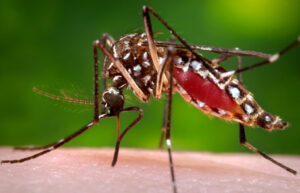
Weighing in at a mere 2.5 – 10 mg and living less than two months, it’s hard to imagine the mosquito as the deadliest animal on earth. However, causing around 725,000 deaths a year, it is just that. More than 3,500 species of mosquito have been discovered, showing a wide range of feeding habits. Nectar collectors and sad-feeding mosquitoes do not need to blood feed, so they leave other creatures alone. Female mosquitoes that require blood feeding for the reproductive process are the annoyance of mammals, birds, reptiles, and amphibians alike. These insects are capable of transmitting West Nile Virus, Encephalitis, Yellow fever, Zika virus, and a host of other harmful infections. With the mounting pressure to reduce the transmission of diseases (specifically Zika) from these creatures, the FDA approved genetically modified mosquito trials to take place in the Florida Keys.
With all this mounting against them, what could they possibly be good for? An integral part of the food chain for many organisms, mosquitoes are necessary for the survival of others. Fish (most notably the mosquito fish), birds, (purple martins and aquatic fowl) and dragonflies all prey on mosquito larvae, while the birds and dragonflies also eat adult mosquitoes.
–Matthew London, 2016 Horticulture Intern
Bernheim is proud to be a healthy forest, which provides a home to many creatures, even the smallest ones – insects. The Bugs of Bernheim is a blog series that will celebrate our six and eight-legged friends. Join us each year on the third Saturday in September at Bernheim’s annual BugFest, where you can see a variety of bugs, dance the buggy boogie, and even sample some tasty insect treats.

